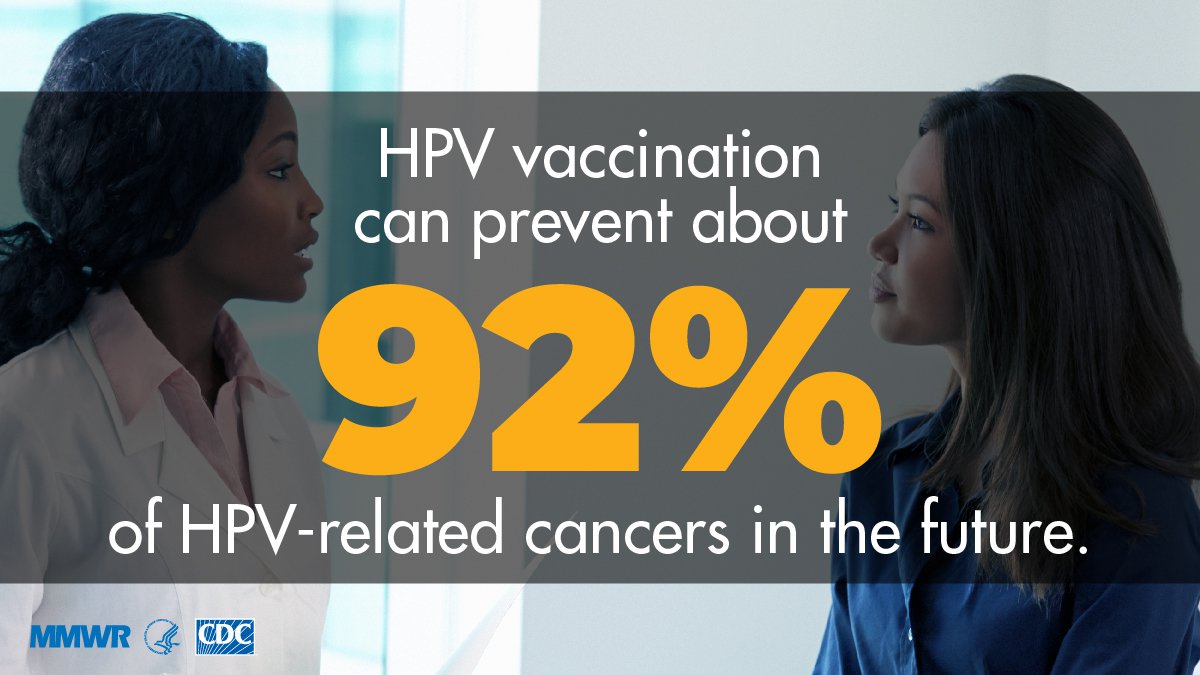Teen HPV vaccine uptake increases with provider recommendation
HPV vaccine uptake increased slightly among adolescents from 2017 to 2018 in the United States, driven by an increase in uptake among boys, according to new vaccine coverage estimates. Researchers found that HPV vaccination was more likely among teenagers whose parents reported receiving a recommendation from their provider.
Writing in MMWR, Tanja Y. Walker, MPH, a health scientist and epidemiologist in CDC’s Immunization Services Division, and colleagues noted that adolescents aged 11 to 12 years should be routinely vaccinated against HPV-associated cancers, meningococcal disease and pertussis. At age 16 years, teenagers should receive a booster dose of quadrivalent meningococcal conjugate vaccine (MenACWY). An additional immunization against serogroup B meningococcal disease can be given between the ages of 16 and 23 years.
Walker and colleagues assessed data collected from the 2018 National Immunization Survey–Teen to estimate vaccine coverage for adolescents aged 13 to 17 years.
Between 2017 and 2018, they found that HPV vaccine uptake increased from 65.5% to 68.1% among the 18,700 adolescents included in the survey. The percentage of teenagers who were up to date for the HPV series also increased from 48.6% to 51.1%. However, increases in vaccination coverage and up-to-date HPV immunization was seen only in boys, not girls.
According to the researchers, increases in vaccination coverage for all adolescents were “modest” compared with previous years.

Provider recommendation was a strong predictor of receiving at least one dose of the HPV vaccine, according to the findings. Specifically, coverage was 74.7% among adolescents whose parents reported receiving a provider recommendation compared with 46.7% among those whose parents received no such recommendation.
How often providers recommended the vaccine varied by state, ranging from 59.5% of the time in Mississippi to 90.7% in Massachusetts.
During the study period, Walker and colleagues also reported increases in vaccination coverage with at least one MenACWY dose (85.1% to 86.6%), and that the vaccination rate for Tdap did not change (89%).
They called the increase in HPV vaccine coverage among boys “encouraging,” and the lack of an increase in girls “concerning.” They noted that an estimated 34,800 cases of cancer caused by HPV occur annually.
In a separate study published in MMWR, Virginia Senkomago, PhD, an epidemiologist and senior service fellow in the CDC’s Division of Cancer Prevention and Control, and colleagues estimated that 92% of these cancers — or 32,100 cases — could be prevented by the currently available nine-valent HPV vaccine.
“Although HPV vaccination has resulted in large declines in the prevalence of vaccine-type HPV infections among adolescent girls and young adults as well as decreases in cervical precancers, continuing to improve HPV vaccination coverage for all adolescents — male and female — will ensure that they are protected from HPV infection and diseases caused by HPV, including cancers,” Walker and colleagues wrote. – by Katherine Bortz
References:
Walker TY, et al. MMWR Morb Mortal Wkly Rep. 2019;doi:10.15585/mmwr.mm6833a2.
Senkomago V, et al. MMWR Morb Mortal Wkly Rep. 2019;10.15585/mmwr.mm6833a3.
Disclosures: The authors report no relevant financial disclosures.
